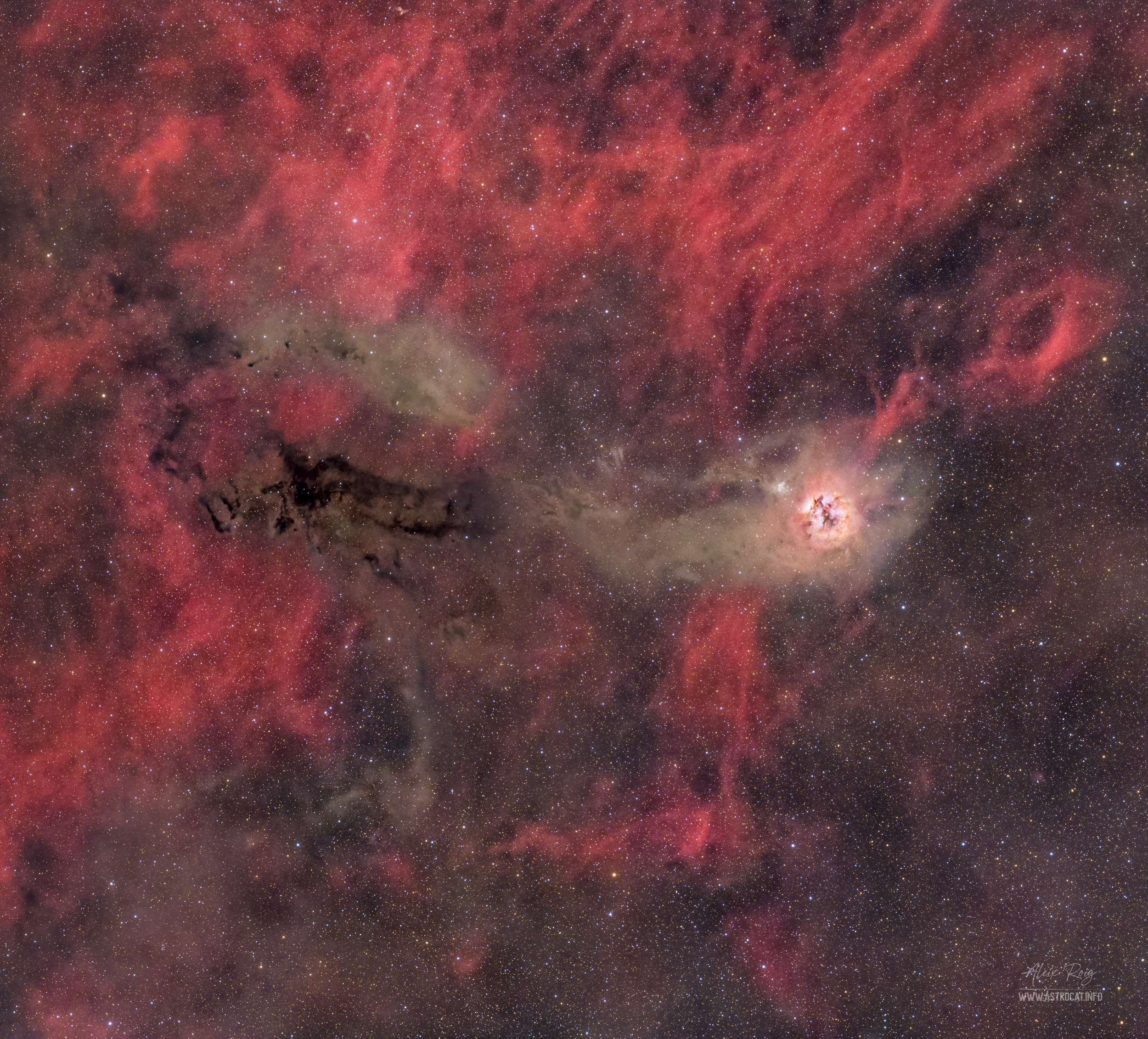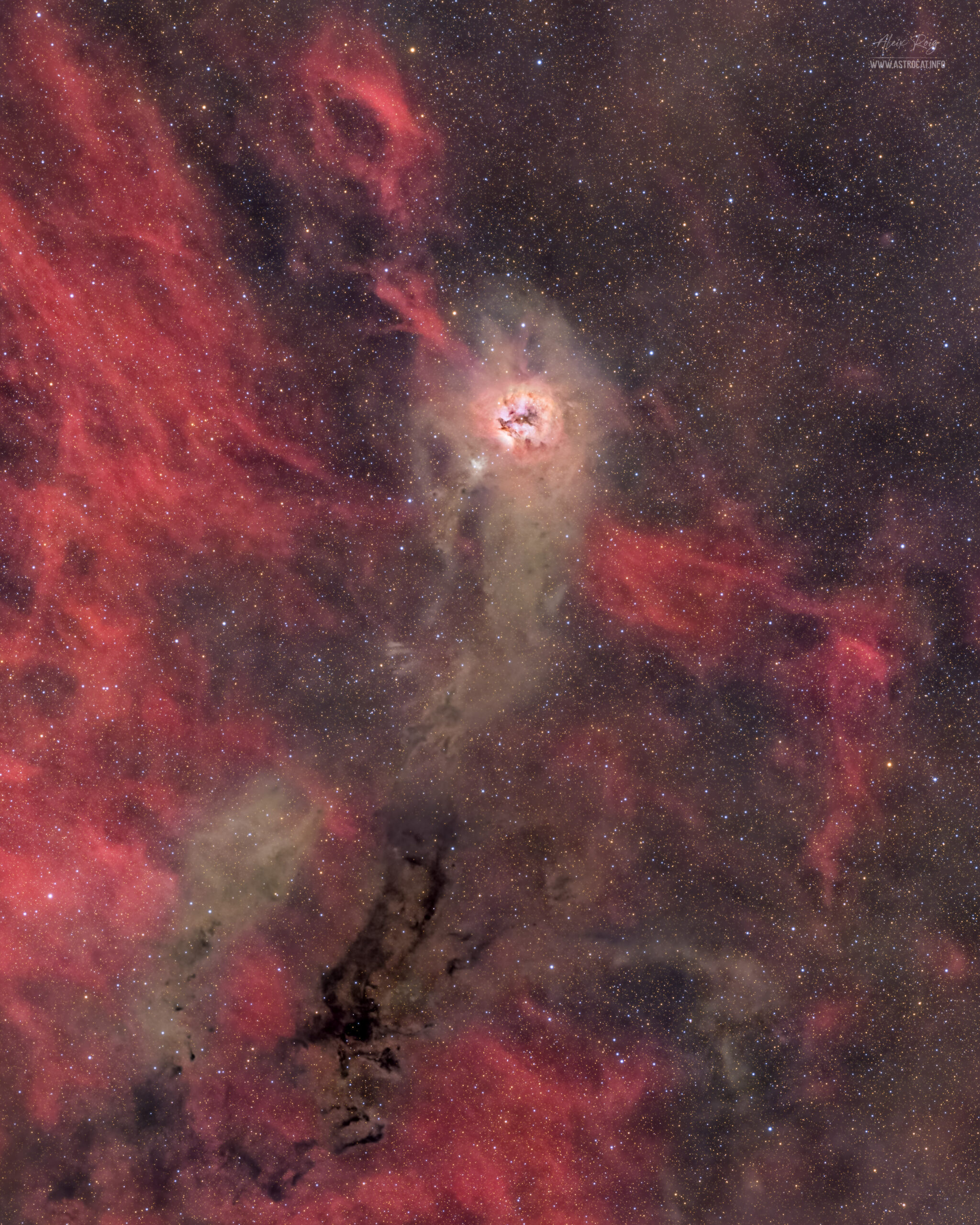The Cocoon Nebula, also known as IC 5146, is a beautiful and intriguing emission nebula located in the Cygnus constellation. It’s nearly 15 light-years wide and it is located some 3,300 light years away from Earth. The nebula gets its name from the appearance of a dark lane of dust that gives the illusion of a cocoon surrounding a cluster of young stars.
The central part of the Cocoon Nebula contains a grouping of newly formed stars, known as NGC 7209 cluster. These stars emit intense ultraviolet radiation that ionizes the surrounding hydrogen gas, causing it to glow and create the nebula’s characteristic red color. The dark lane of dust within the nebula is thought to be a region where new stars are still in the process of forming.
About the image:
To capture this image I used my widefield telescope combined with a monochrome camera. I captured more than 20 hours of Ha data to show all the emission surrounding this nebula. I also used LRGB filters to get the details from the Cocoon nebula itself as well as several other dusty areas that are better shown with broad band filters.
The full image covers an area of 4º28′ x 2º59′ at a resolution of 2.59″/pixel.
Thanks for your time on this website.
Image Details
L: 231 x 300″ (19h 15′)
Ha: 242 x 300″ (20h 10”)
RGB: (20, 20, 20) x 60″ (1h)
Calibrated with darks, flats, dark-flats.
Total exposure: 40h 25′
Average Moon phase at 30%
Image resolution: 2.59”/pixel
FOV (full image): 4º28′ x 2º59′
Equipment
FRA300 + ASI2600MM + LRGB ZWO filters + ZWO EFW 7 pos + ZWO EAF
ZWO AM5 mount
ASI AIR Plus
Guiding with ASI120MM and ZWO Mini Guide Scope
Software
ASI Air software, APP, PIX, TPZ, LR, PS.
Aleix Roig, January 2024
Prades (Tarragona, Catalonia – Spain).



